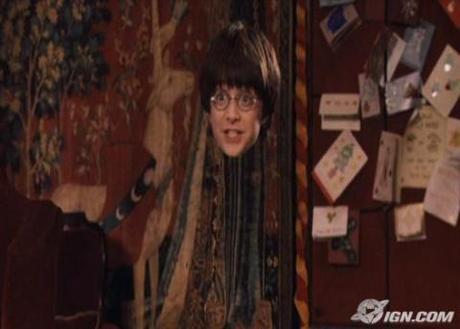
Harry Potter's invisibility cloak - closer to reality? Photocredit: Still from Harry Potter and the Philosopher's Stone, Warner Bros
Yet another fantasy is about to become a reality, as researchers at the University of Texas, in the US, have actually manged to “cloak” an actual three-dimensional object for the first time – a 7.2 inch cylinder. So yes, that’s right, you can’t see it from any angle. Invisibility cloaks here we come! Harry Potter, eat your heart out!
“#nooneisinvisible….Except for me, when I’m wearing my invisibility cloak. Watch out. I could be watching you right now..” tweeted ArryPottah, with the hashtag #CreepyHarry.
Well – not quite. They’ve only managed to do it, said the BBC, with “waves in the microwave region of the electromagnetic spectrum.” The report’s available on The New Journal of Physics. It is, sadly, “unlikely to work at the visible light part of the spectrum.” Mashable noted that another team of scientists, at Cornell University, had managed to cloak both space and time – but only for about a trillionth of a second. Ah well.
The technique used by scientists at Texas is that known as “plasmonic”, which means that a negative version of the cloaked object is presented. This is in contrast to other efforts at cloaking, which have relied on “metamaterials” to guide light in other directions. The plasmonic process means that the shell, or cloak, has to be specifically tailored for each object. The key thing about this particular piece of research is that the object has been cloaked in free space. The shape of the object is irrelevant – anything can be cloaked. But the human eye would be unable to, er, see the invisibility – because it only works at low frequency wave levels.
“[W]e realize a shell that scatters [light] by itself, but the interesting point is that if you combine the shell with the object inside, the two counter out and the object becomes completely invisible,” Professor Alu, one of the co-researchers, told BBC News.
Any benefits? So what’s it good for? Well, microscopes, apparently – allowing them a better look at smaller light wavelengths, said the BBC.
“I, for one, still need to figure out who I’m gonna stalk first,” said Katie Drummond on Wired.
No invisible robot armies? No, sighed Times Live, but “the research could be put to military use. Objects of any size could be masked, including warplanes, which could be made invisible to radar with plasmonic metamaterial.”
Because you’re worth it! There are other applications, suggested The Economic Times – wrinkle creams, being one of them….

